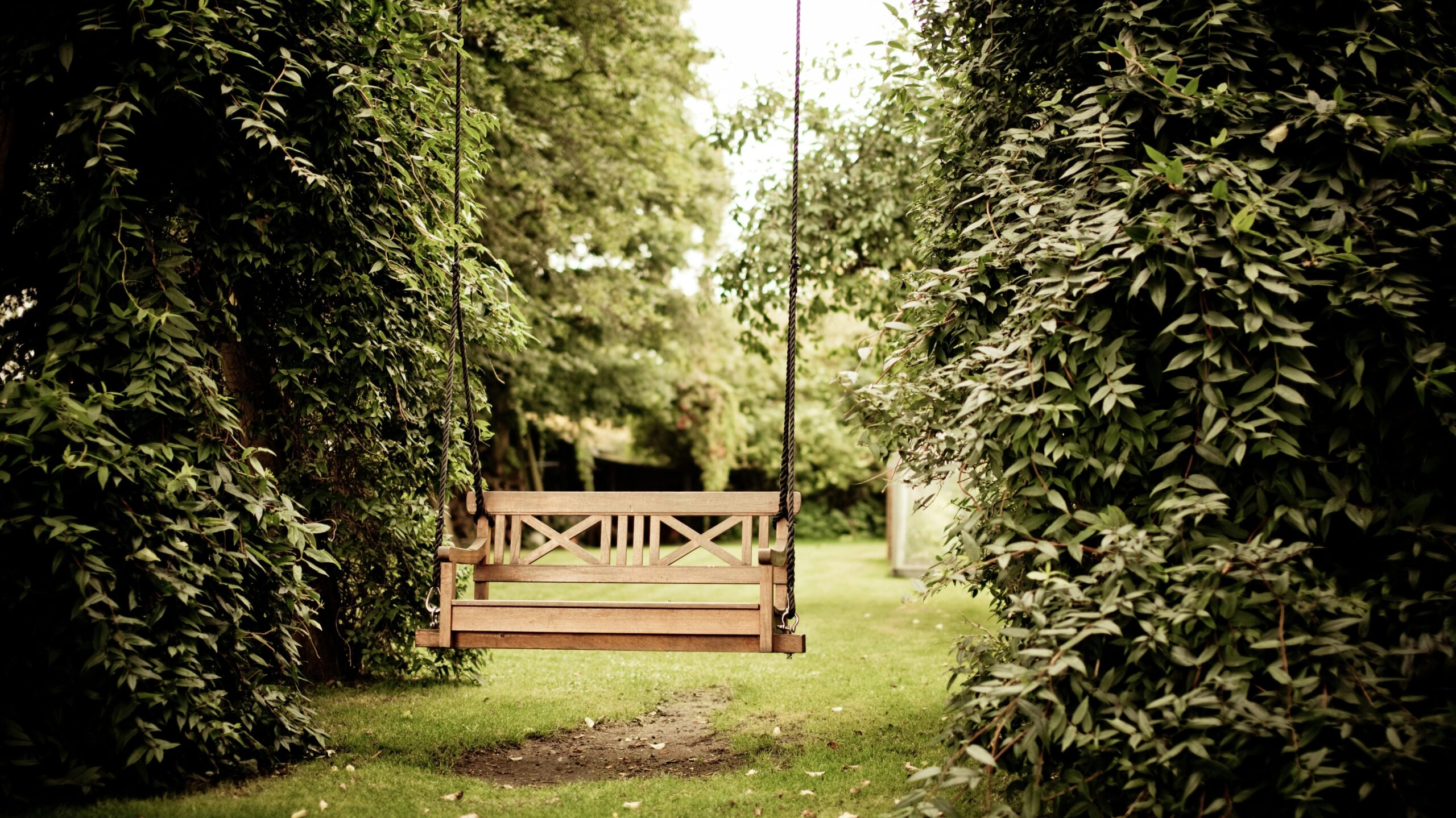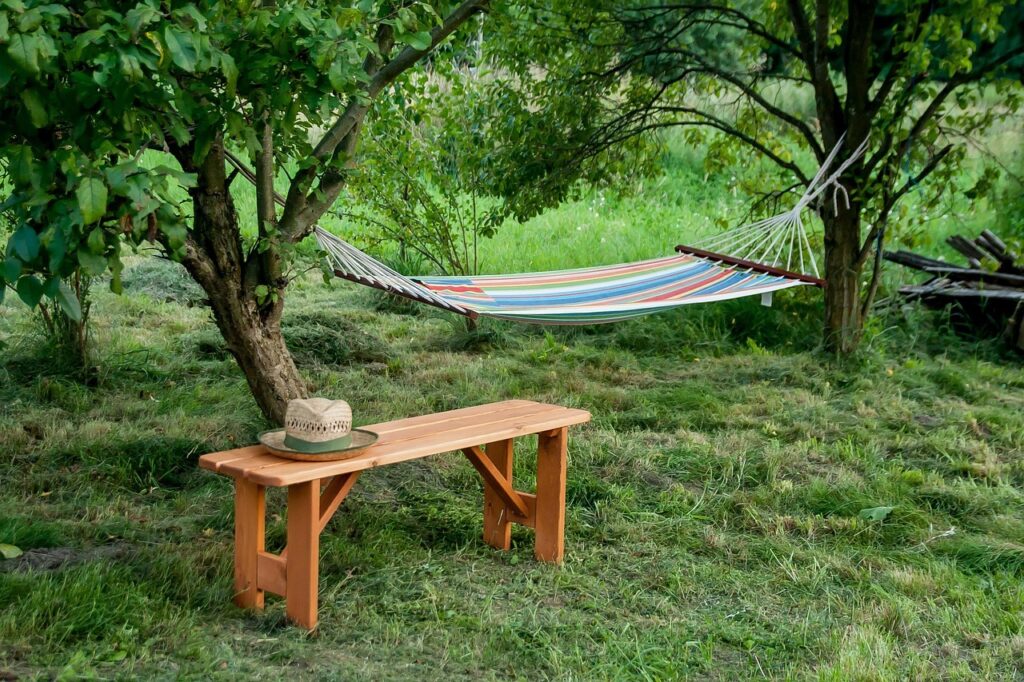I grew up in a desert suburb where the only tree on our block was a spindly ash kept alive by a battleship-gray drip emitter. When my partner and I bought our own place years later, I swore our yard would host a forest—however tiny its footprint. The first sapling I planted was a five-gallon valley oak, staked precariously beside a cracked sidewalk. I watered it with the zeal of a new pet owner, celebrated every centimeter of growth, and mourned each leaf scorched by summer heat. That oak is now a teenager with limbs wide enough for a hammock, and the temperature beneath its canopy averages ten degrees cooler than the patio just a few steps away. The journey taught me that planting a tree isn’t a one-day task; it’s a decades-long partnership. In the guide that follows, I’ll share hard-won lessons so you can plant trees that thrive, add value, and repay you in shade, fruit, and carbon capture for years to come.

1. Know Your “Why” Before You Dig
Trees offer more benefits than most backyard projects combined, but priorities differ:
- Shade & Cooling: Deciduous species on the south or west side slash summer utility bills.
- Edibles: Fruit and nut trees transform lawn into pantry.
- Privacy & Windbreak: Evergreens planted in a row muffle road noise and blunt winter gusts.
- Habitat: Native species support local birds, bees, and butterflies far better than imports.
Write your top two goals on paper; they’ll guide every decision from species to spacing. My oak choice was about shade first, habitat second—knowing that kept me from getting distracted by faster-growing, more ornamental options.
2. Choose the Right Tree, Not Just a Pretty One
The nursery tag’s glossy photo can seduce even veteran gardeners, but longevity hinges on matching the species to your site.
- Climate Compatibility
Use the USDA Hardiness Zone (or your country’s equivalent) as a baseline. Push the zone north or south by even one digit and winter die-back or summer scorch becomes likely. - Mature Size
A “cute” sapling may top out at 60 feet with a 40-foot spread. Measure available space—especially roof overhangs and power lines—then read the mature specs, not the pot size. - Growth Rate vs. Strength
Fast growers like silver maple offer quick shade but often suffer brittle wood. A slower oak or ginkgo might be the sturdier legacy. - Root Behavior
Avoid aggressive surface roots (think willow or poplar) near driveways, foundations, or septic fields. - Native Preference
Native trees usually need less water, resist local pests, and bolster regional ecosystems. If you want ornamental flair, look for cultivars of native species rather than exotics.
Pro tip: Visit mature public plantings—parks, campuses, historic neighborhoods—to see full-grown versions before committing.
3. Timing: Plant When the Tree Can Settle In
- Best windows: Early spring after ground thaws or early fall when soil is still warm but air is cool. Roots grow without the stress of full leaf load or extreme heat.
- Container trees: Can technically be planted any frost-free time, but summer installs require vigilant irrigation.
- Bare-root trees: Must be planted while dormant (late winter to very early spring) before buds swell.
If you’re juggling multiple backyard projects, schedule tree planting first; hardscape and garden beds can flex, but root establishment has a biological clock.
4. Site Selection & Soil Preparation: Success Is Underground
A sapling’s future height is easy to picture; its root spread—often two to three times the canopy width—is out of sight, out of mind. Plan accordingly.
- Sunlight Rule of Thumb
Most shade and fruit trees crave six or more hours of direct sun. Too little light elongates branches in search of sun, producing weak growth and sparse fruit set. - Soil Testing
A $20 mail-in kit tells you pH and nutrient levels. Adjust pH only if you’re far outside the tree’s comfort range; nutrient gaps can usually be filled with compost. - Drainage Check
Dig a one-foot-deep hole, fill with water, and time the drain. If water stands longer than 12 hours, either choose a flood-tolerant species or amend with organic matter and maybe a French drain. - Clear the Competition
Remove turf in a three-foot radius (five for larger species). Grass robs moisture and nutrients from young roots.
I once skipped the drainage test, thinking a hillside plot was safe. A winter storm pooled water for two days; the citrus I’d planted turned yellow within weeks. Lesson logged.
5. Planting Day: A Step-by-Step Blueprint
- Hydrate the Tree
Soak the root ball in water for 20–30 minutes while you prep the hole. Moist roots establish faster. - Dig Wide, Not Deep
Hole width: two to three times the root ball. Depth: just equal to root ball height. Planting too deep suffocates roots; too shallow exposes them. - Scarify Roots
Tease circling roots on container trees. For severe root-bound cases, slice a few vertical cuts with a clean knife to encourage outward growth. - Check Trunk Flare
The place where trunk widens into roots (root flare) should sit at, not below, ground level. Backfill half, water to settle soil, then finish filling. - Skip the Amendments—Mostly
Modern arborists favor backfilling with native soil. Excessive compost in the hole can cause roots to stay “in the pot.” Instead, spread compost as mulch on top. - Mulch a Doughnut, Not a Volcano
Two to three inches of wood chips out to the drip line keeps moisture in and mowers out. Keep mulch six inches from the trunk to prevent rot and rodents. - Stake Only If Necessary
If winds exceed 30 mph or the root ball is tiny, stake for a single growing season. Loosely tie with soft material, allowing slight sway that strengthens the trunk.
Total planting time per tree: about 45 minutes, less once you develop a rhythm.
6. The First Three Years: Water, Watch, Adjust
Think of years one through three as the tree’s childhood—daily needs decline each year but vigilance pays dividends.
- Watering Schedule
Year 1: deep soak weekly (5–10 gallons) depending on rainfall; Year 2: bi-weekly; Year 3: monthly if no rain. Use a slow trickle or a five-gallon bucket with holes to encourage deep roots. - Weed & Mulch Management
Maintain that mulch doughnut and hand-pull weeds that breach the zone. - Fertilizer?
Only if a soil test calls for it, and then lightly; excessive nitrogen can weaken wood and delay dormancy. - Pest Patrol
Inspect leaves and bark monthly. Early intervention—like horticultural oil for scale or sticky bands for caterpillars—spares bigger problems later.
I kept a simple spreadsheet logging dates and amounts of water; it revealed I was overwatering after a rainy week. Data beats guesswork.
7. Structural Pruning: Set the Framework Early
Waiting five years to prune is like waiting until college to teach table manners. Shape now:
- Choose a Single Leader
Most shade and fruit trees benefit from one central trunk. Remove competing leaders while they’re skinny; the cut heals fast. - Establish Scaffold Branches
Aim for three to five main branches spiraling around the trunk, spaced 18–24 inches apart vertically. - Remove Problems Early
Crossed branches, narrow crotch angles (<45°), and rubbing limbs can become fracture points in storms.
Winter dormancy is ideal for major cuts on deciduous trees; summer “pinch pruning” can slow overly vigorous shoots.
8. Maximizing Ecosystem & Economic Benefits
- Energy Savings:
Plant deciduous trees on the west side to block summer sun but allow winter light through bare branches. - Stormwater Management:
Trees intercept and absorb rainfall, easing pressure on municipal drains. Combine with permeable pavers for a one-two punch. - Air Quality & Carbon Sequestration:
A mature hardwood can absorb 48 pounds of CO₂ per year. Multiply by two or three trees and you offset a road trip. - Property Value:
Real-estate studies link mature trees to a 3–15 percent increase in home sale prices. Shade equals curb appeal.
Think of each tree as infrastructure—cheaper than solar panels and often just as impactful on energy bills.
9. Community and Legacy: Beyond Your Fence Line
One tree is good; a block of trees is transformative. Organize a neighborhood planting day:
- Survey Interest—Knock on doors or post in local groups.
- Bulk Buy Discounts—Many nurseries slash prices for orders of ten or more.
- Municipal Grants—Cities often fund street-tree programs because canopy cover reduces heat-island effects.
- Shared Tools & Labor—Not everyone owns a post-hole digger, but someone does. Trade lemonade and expertise.
The valley oak that started my journey now shades the sidewalk too. Kids linger beneath it on hot walks home from school—an unintended but heartwarming benefit.
10. Long-Term Stewardship: The 20-Year Outlook
Fast-forward two decades. A well-placed oak drops acorns and broad shade; a mature apple gifts pies; a line of cedars breaks icy winds. Yet complacency invites trouble.
- Health Checks Every Five Years—Hire a certified arborist for a risk assessment, especially if limbs overhang roofs or play areas.
- Soil Renewal—Top-dress with compost or leaf mold; avoid root disturbance from new construction.
- Mulch Refresh—Organic mulch breaks down, feeding soil but thinning out. Replenish to maintain the two-inch blanket.
- Succession Planting—Start young replacements before older giants decline, keeping canopy continuous for generations.
Legacy isn’t about grand monuments; it’s leafy, living, and photosynthesizing long after we’re gone.
Final Thoughts
Planting a tree marries immediate gratification—the simple act of sliding a root ball into fresh earth—with slow, enduring reward. It asks only an afternoon of labor but promises decades of benefits that compound yearly: cooler air, fresher fruit, gentler winds, richer soil, brighter birdsong. My teenage oak reminds me daily that good things grow slowly and quietly, rewarding consistent care with exponential returns.
So grab a shovel, test your soil, and choose a sapling aligned with your climate and goals. Water deeply, prune wisely, and invite neighbors to join you. A decade from now, you’ll look up into a leafy ceiling, feel the drop in temperature, and realize you didn’t just plant a tree—you planted comfort, resilience, and a living testament to foresight. Happy planting, and may your backyard canopy flourish for generations to come.


